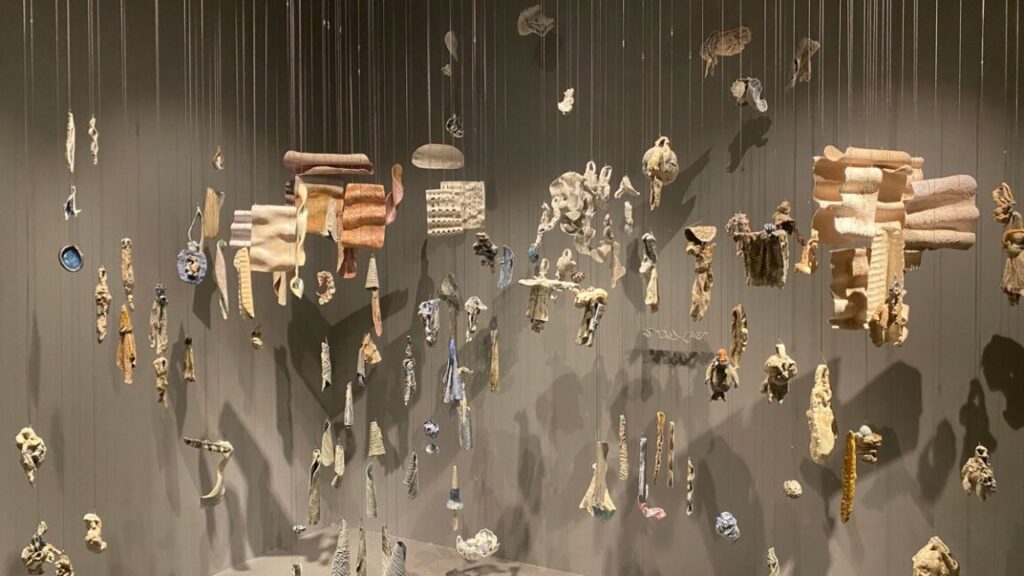Graphene-enhanced ceramic tiles make striking art
In recent years, materials scientists experimenting with ceramics have started adding an oxidized form of graphene to the mix to produce ceramics that are tougher, more durable, and more resistant to fracture, among other desirable properties. Researchers at the National University of Singapore (NUS) have developed a new method that uses ultrasound to more evenly distribute graphene oxide (GO) in ceramics, according to a new paper published in the journal ACS Omega. And as a bonus, they collaborated with an artist who used the resulting ceramic tiles to create a unique art exhibit at the NUS Museum—a striking merger of science and art.
As reported previously, graphene is the thinnest material yet known, composed of a single layer of carbon atoms arranged in a hexagonal lattice. That structure gives it many unusual properties that hold great promise for real-world applications: batteries, super capacitors, antennas, water filters, transistors, solar cells, and touchscreens, just to name a few.
In 2021, scientists found that this wonder material might also provide a solution to the fading of colors of many artistic masterpieces. For instance, several of Georgia O’Keeffe’s oil paintings housed in the Georgia O’Keeffe Museum in Santa Fe, New Mexico, have developed tiny pin-sized blisters, almost like acne, for decades. Conservators have found similar deterioration in oil-based masterpieces across all time periods, including works by Rembrandt.
Van Gogh’s Sunflower series has been fading over the last century due to constant exposure to light. A 2011 study found that chromium in the chrome yellow Van Gogh favored reacted strongly with other compounds like barium and sulfur when exposed to sunlight. A 2016 study pointed the finger at the sulfates, which absorb in the UV spectrum, leading to degradation.
Even contemporary art materials are prone to irreversible color changes from exposure to light and oxidizing agents, among other hazards. That’s why there has been recent work on the use of nanomaterials for conservation of artworks. Graphene has a number of properties that make it attractive for art-conservation purposes. The one-atom-thick material is transparent, adheres easily to various substrates, and serves as an excellent barrier against oxygen, gases (corrosive or otherwise), and moisture. It’s also hydrophobic and is an excellent absorber of UV light.
Graphene-enhanced ceramic tiles make striking art Read More »
